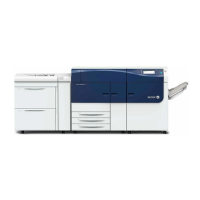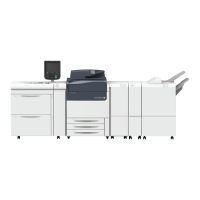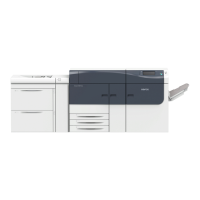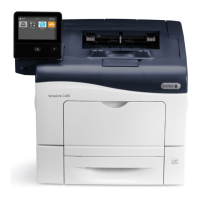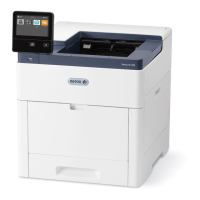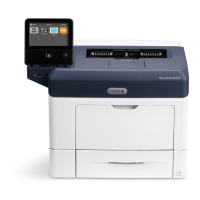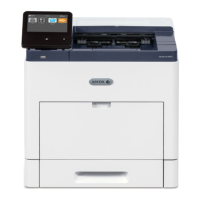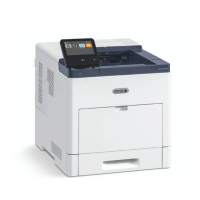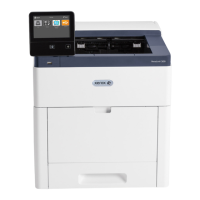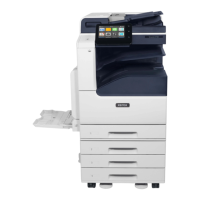53 Customer Expectations & Installations Guide
Operational Considerations
Image Quality Expectations
Image Quality
As with any printing process, artifacts will occur. These may include banding, streaks, mottle, spots, and more. For most jobs
and clients, the expected level of artifacts is within the normal operational and component quality ranges of the system
and will not affect the acceptability of the job. Maintenance procedures are available to mitigate these artifacts.
- Artifacts may occur with more frequency when running heavyweight coated media.
- Certain jobs may show bands across the sheet when running ~350gsm media.
- Edge deletions are most common when duplex printing on heavier (>220 gsm / 85 lb. Cover) stocks and when using
the maximum available image area. Deletions can be mitigated by using less than the maximum imageable area, i.e.
allowing extra blank space at the lead and trail edges of the paper
- Using products on the Recommended Materials List (RML) and maintaining your environment will help to minimize the
occurrence of these artifacts.
Color quality perception is subjective and will be affected by ambient lighting conditions.
The customer is responsible for calibrating the Press. Refer to the Press customer documentation for guidelines.
Image quality is strongly influenced by paper surface structure, texture, and color. To ensure satisfaction of your customers,
key jobs should be printed on the Press using representative paper for review by the customer.
The surface texture of some uncoated papers may cause increased graininess in halftone areas printed with only black
toner. This effect may be minimized by using smooth or coated papers (refer to the Recommended Media List).
Sheets in a job may exhibit slight variation in gloss within a page (variation across page in the process direction).
Prints may exhibit random white spots caused by paper dust, stray developer beads, or other particles. You can reduce the
occurrence of white spots by using Xerox approved paper. If you are cutting your own paper, ensure that cut edges are dust
free, and keep the machine in a clean and dust/dirt reduced environment. Failure to do this will result in increased frequency
of white spots.
Xerox recommends use of the SIQA toolset to improve registration on certain media, correct density if inboard-to-outboard
density variation is observed, or if mottle is observed on side or side 2.
Printing Expectations
Product Limitations and Caveats
When printing a large number of one page jobs in a row a 45-310 fault could occur requiring a full system reboot.
The maximum rated print speed may be affected by job types and job settings. Productivity may be affected by the press
cycling down/cycle up within or between jobs, and finishing options that are selected for a particular job.
Overall productivity may also decline due to the press pausing to make adjustments to maintain consistent image quality.
More frequent image quality adjustments and more severe productivity loss may be seen for the following job types:
- Low area coverage jobs (3% area coverage per color or lower)
- Mixed media jobs; refer to Tray Switching and Mixed Media Test Results and Print Engine Productivity Charts
NOTE: Impact to productivity depends on the specific attributes of each job.
If utilizing the Offset Catch Tray (OCT), overall productivity will decline if offsetting mode is selected. The print engine will
pause printing in order to offset between sets and then resume printing. Productivity loss depends on the number of sheets
per set with single-page jobs representing the worst case (approximately 50% productivity loss).
In certain conditions (e.g. high temp., heavy media, high area coverage), printed sheets may stick to each other. In these
situations, the operator should select the Ink Setoff Prevention setting to "Always On". This will slightly increase the gap
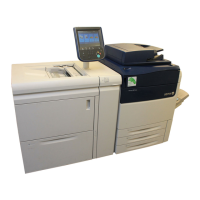
